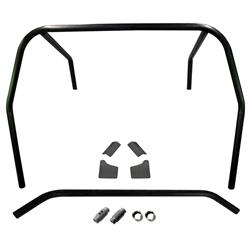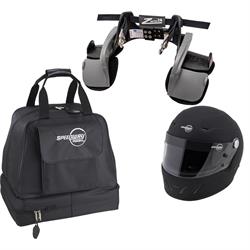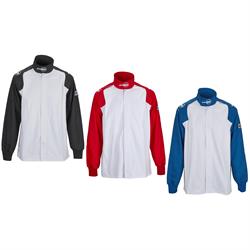NHRA Rules For Newbies & Drag Racing Safety Requirements
It’s time to hit the drag strip! Whether you’re planning to compete under NHRA rules or just want to see what your car can do in a safe, controlled environment, you’re in for a thrill that’s about as close to a rocket launch as it gets on four wheels.
Drag racing’s roots go back to the 1930s, when hot rodders opened up their cars on the dry lake beds of Southern California. As engines got better and speeds topped 100 mph, the need for structure and safety became clear. After World War II, the sport began to take shape, and in 1951, Wally Parks founded the National Hot Rod Association (NHRA) to bring organization and legitimacy to the sport. Today, the NHRA remains the gold standard, from local bracket racing all the way up to 330 mph Top Fuel dragsters.
One of the best parts about it? You don’t need a dedicated race car to get started. Street-legal vehicles are welcome at NHRA tracks across the country, and for many enthusiasts, it’s the perfect way to tap into their car’s performance capabilities in a supervised–and 100 percent legal–setting. This guide will help you prepare for your first NHRA-style test-and-tune or bracket event. We’ll cover what track officials look for, what safety gear you’ll need, and what to expect from the typical tech inspection.
What are the Requirements for Drag Racing?
Let’s start with what you’re wearing–yes, there’s a dress code at the drag strip, and there is such thing as proper drag racing attire. You’ll need a shirt with sleeves, long pants, socks, and closed-toe shoes. It might not seem like much, but this basic equipment helps protect you in case things go off the rails. So, leave the shorts, tank tops, flip-flops, and/or sandals at home; tech officials won’t let you on the track without the right clothing. For a full break-down on what to wear to the track, check out our guide on how to choose a racing suit.
DOT-approved race helmets are the baseline for slower cars–pretty much anything running 14 seconds or more in the quarter mile. But according to the NHRA rulebook, if your car runs quicker than 13.99 in the quarter (or 8.59 in the eighth), you’ll need a helmet that meets Snell or SFI standards. That rule also covers dune buggy-style vehicles, even if they’re only running 14.00 (or 8.60) or slower. Basically, if there’s any question about your ET, it’s best to bring a Snell- or SFI-certified helmet along just to be on the safe side. We’ll have more on that in a little bit.
Before you can make a pass, your car also must go through a basic tech inspection to make sure everything’s mechanically sound. Officials will check that your battery is secure, your seat belts and brakes work properly, your tires are in good shape, and that there aren’t any fluid leaks. They’ll also look for an overflow radiator catch can, and make sure your throttle linkage snaps back like it should. Inside the cabin and trunk, anything that’s loose and could become dangerous at speed (floor mats, water bottles, tools, etc.) will need to be removed. And if your car’s an automatic, they’ll check that it only starts in Park or Neutral.
The bottom line is that your gear and your car must meet NHRA safety standards, and taking the time to prep before heading to the track will save you some heartburn later on.
Do You Need a Special License to Drive on a Race Track?
Thankfully, there aren’t too many hoops to jump through. For most first-timers, a valid driver’s license is all you need to hit the track. As long as your car runs slower than 9.99 seconds in the quarter mile and stays under 135 mph, you’re good to go with just a regular license.
If your car’s quicker than that, however, you'll need to apply for an NHRA Competition License. This shows that you can safely handle a quicker car and that your vehicle meets the stricter safety standards that come with higher speeds. Getting the license usually means passing a physical, making a few supervised test passes at the track, and sometimes getting the car’s chassis certified. You might also need to complete an NHRA-approved driver training course.
But if it’s your first time out and you’re driving a beginner or street-legal car, you don’t need to worry about any of that. Just show up with your license, a safe car, and a willingness to learn and improve your driving skills. The more advanced licensing only comes into play if you’re planning to go faster or move up to a higher class–and even then, the process is pretty straightforward.
NHRA Rules: What Every New Racer Needs to Know
The official NHRA Rulebook covers tons of information for a wide range of vehicles across all competition classes. But if you’re just getting started, most of it won’t apply to you. There are just a few key regulations you’ll need to understand and follow before hitting the staging lanes.
First, safety is non-negotiable. We already touched on tech inspection, so there is no need to go over that again. But keep in mind, the inspection might be more involved depending on your setup, such as if you’re running slicks, for example, or using power adders like nitrous, a turbocharger, or a blower. You’ll also need a shut-off valve that can be easily reached from the driver’s seat for your nitrous system. Plus, they’ll verify that all racing safety gear, like your helmet and flame retardant racing suit, matches your car’s performance level. Otherwise, make sure your car isn’t leaking any fluids, and remember that only the driver is allowed in the vehicle during a run, no passengers, even for beginners.
Then there’s the staging process. This is when you roll through the burnout box–but only do a burnout if you’re running drag slicks; it doesn’t really help with street tires. After that, you’ll slowly approach the starting line, and stage your car using the pre-stage and stage lights on the Christmas tree. Once both bulbs are lit, the countdown begins. There’s a 0.4-second difference between the last amber light and the green on a Pro tree, but you’ll most likely start with a Sportsman tree setup on test-n-tune nights, which is 0.5-second difference between the last amber and the green being lit. So, when you see that final amber flash, that’s when you hit the gas for a perfectly timed launch. Just don’t jump the gun. Leaving before the green earns you a red light (and an immediate DQ).
NHRA Roll Cage Rules: Do You Need One?
If you’re new to racing, you might be wondering whether you need to install a roll cage before heading to the track. The good news is that most beginners driving stock or lightly modified street cars don’t need one right away.
Now, if your car’s a convertible and it covers the quarter-mile in 13.49 seconds or quicker, you will need a roll bar. For full-bodied vehicles, the cutoff is a little less aggressive; anything faster than 11.49 seconds gets a roll bar. Once your car dips into the 10.99 range or exceeds 135 mph, a full roll cage with altered floor pans becomes mandatory.
There is one exception: If your full-bodied car runs between 10.00 and 10.99 seconds and the firewall, floor, and body are unaltered, you can still get away with just a roll bar instead of a full cage.
Once your car breaks into the 9s or runs faster than 150 mph, the safety requirements ramp up. At that point, you’ll need a certified roll cage, along with other upgrades like a race car window netting, five point harness seat belts, and fire-retardant driving gear. If you're building a car that’s going to need a cage, it’ll have to be made from mild steel or chromoly tubing for a roll cage specifically. It will also need to be installed to NHRA specs, and either welded or bolted in depending on specific class rules.
But don’t sweat it for your first time out, you probably won’t have to worry about these things. They’ll only come into play once your car starts going a lot quicker and the ETs start dropping.
NHRA Helmet Rules: What Helmet Do You Need for Drag Racing?
Helmets are a key piece of safety gear in every form of racing, not just the straight-line kind The NHRA doesn’t play games when it comes to driver protection. Now, if your car runs 13.99 seconds or slower in the quarter mile, or 8.59 or slower in the eighth, some tracks may not technically require one. But still, it’s your head, so wearing a helmet is just sort of common sense.
Once you’re running quicker than that, though, you’ll need a helmet that meets specific certification standards. The NHRA accepts current Snell- or SFI-rated helmets. For newer racers, the most common types are Snell M (motorcycle) and Snell SA (Special Application, which are made for motorsports).
That said, some tracks might be OK with a Snell M-rated helmet for slower cars. But a NHRA Certified helmet does require at least a Snell SA or SFI 31.1/2015 or 41.1/2015 once you’re going quicker than 13.99. If you’re running a naturally aspirated car on street tires, tech inspectors might give you a pass with an M-rated helmet, especially if the car’s on the slower side. But honestly, you’re probably better off splurging for an SA-rated one from the get-go.
As your car’s ETs tighten up, so do the NHRA’s head gear requirements. Drivers whose vehicles cover the quarter in 9.99 or less, or exceed 135 mph, must now wear a full-face helmet that meets Snell or SFI specs; and for those going 7.49 or quicker, a shield becomes mandatory equipment. Cars that hit 150 mph (or more) may also be subject to more restrictive helmet requirements. In addition, if you’re driving an open-bodied car (at any speed) and wearing an open-face helmet, you’ll also need to wear protective goggles.
Generally speaking, you aren’t allowed to modify the helmet, visor, or shield, and all helmets must have a valid certification sticker inside. This is important, because even if your helmet still looks new, if it’s expired, it won’t pass tech inspection. Check out our racing helmet guide for a full overview of drag race helmet requirements.
Getting Hooked (Up) on NHRA Drag Racing That first pass down an NHRA-sanctioned drag strip is something you’ll never forget–and it should get the adrenaline pumping for all the right reasons. You’ll just want to keep a few things in mind, like making sure your car’s ready to pass tech inspection, showing up with the right drag racing gear, and getting familiar with the rules so everyone leaves happy and in one piece.
Most importantly, have fun, don’t hesitate to ask questions, and take advantage of the friendly, welcoming drag racing community you’re bound to run into at the track.






